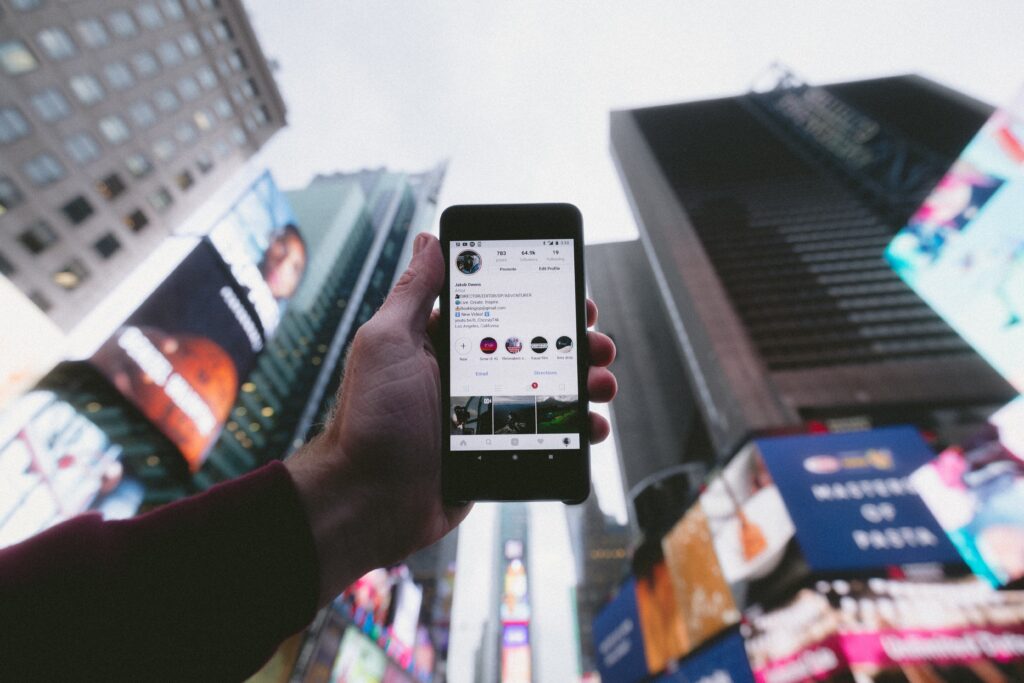Increasing brand reach, driving customer loyalty, maximizing referrals, and building customer lifetime value are all reasons to look into starting an ambassador program. By taking a customer-centric approach in marketing, brands in all industries can harness the power of Word of Mouth Marketing to drive sustained growth.
Brands of all sizes can benefit from an ambassador program.
With 74% of people turning to social media for purchasing decisions. Every company should utilize ambassadors to generate authentic content, reach new potential customers.
Let’s take a closer look at the 4 reasons why brands like Maker’s Mark, and Lululemon utilize a brand ambassador program.
Increase Brand Reach
Increasing a brand’s reach is easy with an ambassador program. Ambassador’s promotional content is very effective on social media and the internet. Today, ads are no longer being seen because 30% of internet users are using ad blockers. Ambassadors solve this issue with their influential user-generated content that promotes a brand. This content is then shared directly with their audiences in an authentic, engaging way.
Also, with the average Facebook user having 150 friends, an ambassador community can easily help a brand reach new potential customers. As an ambassador community promotes, comments and shares brand relevant information, a brand now is capable of reaching their ambassador’s social media followings.
With an ambassador program, the company is able to promote itself using its ambassador’s content that has a better chance of being seen, shared, and liked.
Check out these three stats that highlight the way ambassadors help increase brand reach:
- The average Twitter user now has 707 followers
- The average social media user is connected to 400+ friends and family
- 75% of Instagram users take action, such as visiting a website, after looking at a brand’s post
Drive Customer Loyalty
An ambassador program is also a great way for a brand to build loyalty among customers. Ambassador programs help a company build a central community of its most passionate customers. When customers become involved and are treated like family, the probability of retaining customers and driving loyalty increases.
Brands can also create an authentic image of themselves with an ambassador program. Ambassadors on the frontline speak with consumers and offer them the authentic human face they want when inquiring about a brand. When consumers view a brand as authentic, they become more inclined to promote and support the brand to their closest followers.
Take these stats backing up the importance of brand authenticity, and engaged customers:
- 48% of consumers report that they are more likely to become loyal to a brand during the first purchase or experience
- According to Stackla’s 2017 consumer content report, 86% of consumers say authenticity is important when deciding what brands they like and support
- 91% of customers want brands they follow to be authentic in their social media posts
Maximizing Referrals
Brand ambassadors help increase referral sales. Personal recommendations that ambassadors share with their audience have a powerful influence on sales. The fact that 90% of people trust recommendations from friends highlights the value of ambassadors introducing new customers to your brand.
Ambassadors also provide social proof by creating and sharing content. When a customer witnesses an ambassador’s authentic promotional content and recommendations, purchasing decisions now become easier.
In addition, ambassadors can also increase referrals by sharing discount codes and referral links with their friends, family, and followers. With discount codes, ambassadors are now able to incentivize potential consumers to act on their promotion.
As ambassadors provide an authentic opinion on a brand’s products there’s no telling how many new consumers they can bring in.
A couple more stats explaining the importance of ambassadors for referral sales:
- 84% of people purchase a product because of a referral. Even if they didn’t directly know the person
- 30% of consumers are more likely to buy a product recommended by a non-celebrity blogger
- Companies can expect at least 16% more in profits from referred customers
Maximize Customer Lifetime Value
Ambassador programs maximize customer lifetime value. When a brand transforms passionate customers into ambassadors, they now have a way to engage and incentivize these customers to hang around longer and purchase more and more frequently. Actions like inviting them to events, sending them company updates, and giving access to a private group all help with making a customer feel like they belong. Also, with incentives like product discounts and free merchandise, an ambassador program helps attract new customers and provides a reason for people to stick around longer than expected.
Check out these three stats on the impact ambassadors have on customer lifetime value:
- The lifetime value of referred customers is on average 16% higher than that of non-referred customers
- The probability of selling to an existing customer is up to 14 times higher than the probability of selling to a new customer
- Customers acquired through referrals have a 37% higher retention rate
Conclusion
With these stats, it’s easy to see that ambassador programs are an effective way for brands to increase reach, referral sales, customer lifetime value, and drive customer loyalty. With the right strategy, great tools, and great ambassadors, any brand will effectively take advantage of the 4 reasons stated above.
If you are looking to start an ambassador program and want to have the right platform for them in place have a look at what BrandChamp can do for you. Already have an established program? Schedule a time to chat with one of our representatives today to learn how our software can help.













